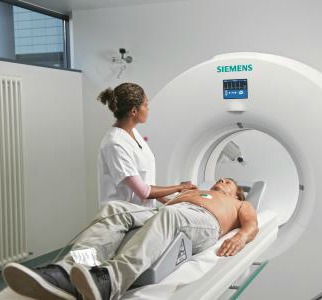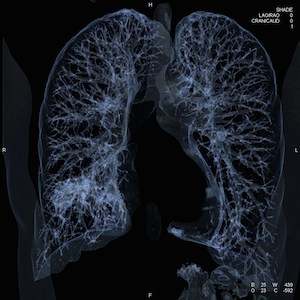 It’s nearly Election Day, and while there are no major victories that will drastically affect imaging providers, I bet you’re still wondering, “How do I manage or grow my imaging business in such a turbulent healthcare environment?”
It’s nearly Election Day, and while there are no major victories that will drastically affect imaging providers, I bet you’re still wondering, “How do I manage or grow my imaging business in such a turbulent healthcare environment?”
I get this question a lot, and there’s no easy answer. But I would be remiss, especially this month, if I didn’t mention taking advantage of Medicare-covered lung cancer screenings with low-dose CT.
I’m sure you know that low dose CT (LDCT) lung cancer screenings are a great way to build volume for your imaging practice. The good news is that programs are even easier to implement from a technology perspective thanks to CT solutions that have smaller footprints and better price points.
Of course, difficulties certainly exist when attempting to develop a program or launch a marketing campaign that creates enough patient and physician demand. After all, a brand new program has to make sense from a business perspective.
If you have yet to launch an LDCT program or are looking for growth, here are the steps you can take to spread the word and increase patient volume at your facility.
Conduct a market analysis to estimate potential volumes and program need
First things first: you need to determine if the size of your community supports a dedicated program for LDCT lung cancer screenings. Your market must be sufficiently large to make it worth the time you’ll spend on outreach, patient care coordination, marketing materials and more.
Start by figuring out the population you could feasibly market your program to.
In larger cities, patient volume in support of a LDCT program shouldn’t be a problem. If, however, you work at a critical access hospital or other rural imaging center, you’ll need to take larger stock of your patient base.
How far do people typically travel to receive a test at your facility? What is the total population you could conceivably reach through patient referrals?
If your market has the volume to support this type of program, then it’s time to move to the next step.
Review the competition’s program offering and pricing
This is one step that people often overlook, but depending on the size of your prospective population, it can make or break your LDCT efforts.
Find out if any of your competitors have a program already going. If so, see how committed they are to it and if your market supports multiple programs. There may very well be room for both of you. If they don’t have a program in place, then you’re golden.
Identify high-risk patients and eligibility for reimbursement
Just as important as gauging the entirety of the population itself, you’ll want to research age demographics and the prevalence of smoking in your population. Many state and county departments of health should have this information readily available.
This step is important, as your prospective patients have to meet certain requirements in order to qualify for coverage under CMS’s final ruling. Here are the exact criteria your patients need to meet:
- Age 55-77 years
- Have no signs or symptoms of lung cancer
- Have a tobacco history equivalent to smoking a pack a day for thirty years (30 pack-years)
- Be a current smoker or one who has quit smoking within the last 15 years
- Have a written order for an LDCT lung cancer screening received during a counseling and shared decision-making visit
Patient volume still sufficient? Great! Now comes your next challenge.
Establish a program coordinator or champion, often led by a staff radiologist
There’s a good chance that, if you’re reading this, this person is you. But even if it’s not, understand the importance of finding someone who can really spearhead these efforts.
When physicians and executives see someone who’s passionate about detecting lung cancer early and is able to eloquently justify the program from a financial standpoint as well, it’s going to be easier for everything else to fall into place the way it should. When that person is a staff radiologist with the clinical knowledge that establishes them as an expert on the subject? Even better!
Gain support from hospital executives
This one’s critical. You absolutely need buy-in from the top if you hope to gain the referrals that can really make your campaign a success.
The good news? You’ve already done a lot of the legwork with the initial two steps. The first thing hospital executives will want to know is if the effort is worth the result, and you’ve already proved the demand is there. Now you just need to present your findings. Case closed!
Get physicians in your corner
Just as crucial as convincing executives is convincing your referring physicians of the worth of sending their patients to your facility for an LDCT screening.
Get your LDCT lung cancer screening advocate in front of your in-network physicians with an informational lunch-and-learn or some similar presentation at your facility. If you’re in a separate facility from the majority of your physician partners, then go to them. If they’re in far flung locales, then bring them together in one central spot or, if that’s going to create too large of an expenditure, host a webinar.
At your presentation, be sure to review CMS funding parameters and then explain the preparations you’ve made to take on greater numbers of patients.
You can also send informational emails, postcards and other collateral to raise awareness among your provider community.
Here’s a handy tip that’s sure to pay dividends: you know your physician referral forms? Print them on the back of an informational flier. Now you’ve got a marketing piece AND a referral form all in one. All the physicians have to do is turn the paper over and they’re ready to go.
Accepting electronic forms? No problem. Just include a link to the referral form in the email you send to raise awareness.
Coordinate care across the continuum
Now that you’ve got your program ready to go and you’ve got physicians in your corner, you’re ready to close the loop.
Coordinate with physicians and the rest of your patients’ care team to provide the best follow-up advice and care. This is certainly necessary if the results reveal masses that could be cancerous and require a biopsy, but it’s also important even if the patient is cancer-free.
Patients who still smoke can benefit from health education and classes dedicated to smoking cessation. Successfully convincing a patient to attend a class and have regular follow-up appointments with their general practitioner means you can reduce their lung cancer risk as they age.
Let’s get started
The sooner you start, the better. Good luck on your LDCT Screening program, and if you’d like additional guidance, check out these resources designed to help you further promote your efforts:








Comments